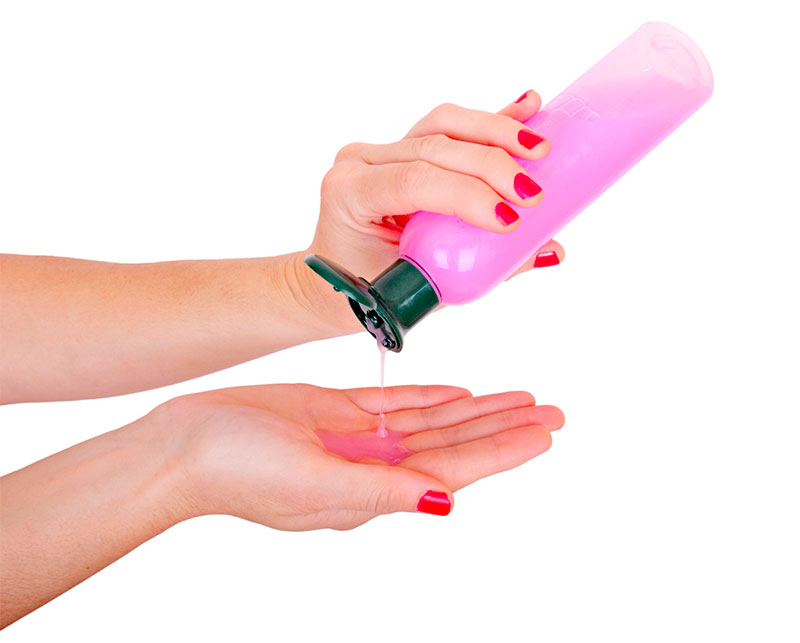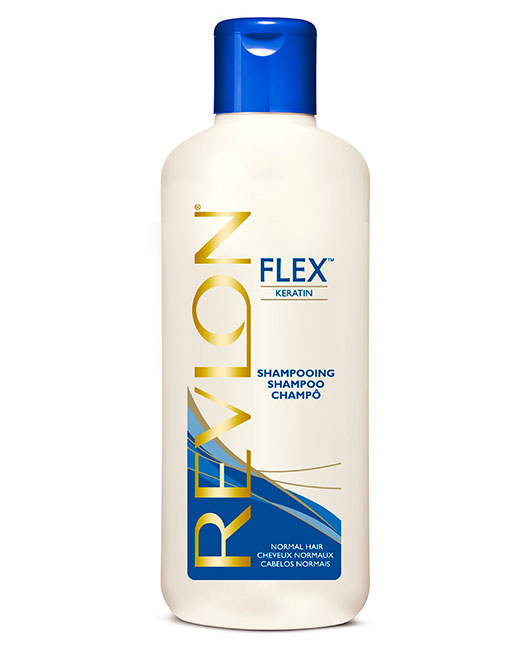Healthy and beautiful hair begins with the right care. The first step in this is, of course, purification. Only after this procedure can you start feeding on locks with vitamins and protecting them from the adverse effects of external factors. When choosing a shampoo, it is worth remembering that in addition to getting rid of hair from impurities, it directly affects their structure and general condition, and therefore, the appearance. In order not to be disappointed in the result obtained, it is necessary to carefully consider the purchase of funds to which you are going to entrust the hair. Let's see what specific features of hair and other parameters should be considered when choosing.

Content:
The best manufacturers of shampoos - which company to choose
Today, shops, pharmacies and beauty salons provide a huge assortment of shampoos from the most diverse global manufacturers. Since this product is an indispensable tool in hair care, it is in great demand.
Some consumers do not bother with the purchase and, coming to the point of sale, acquire the first available product, without going into the study of the composition and analysis of whether the selected instance is suitable for them. Others, on the contrary, carefully read the label and know exactly what is needed, so they are ready to overpay for the presence of useful ingredients, preferring well-known brands.
We have prepared a list of the most sought-after brands for those who do not have the opportunity to read the article in detail:
1. Schwarzkopf
2. L’Oreal
3. Matrix
4. Pantene
5. Head & shoulders
The above manufacturers are probably familiar to most people. They are present in the domestic market for several decades. Their products are of good quality, which is confirmed by independent laboratory tests. Many of the companies produce funds in the category of mass-market and professional. Those wishing to find a particular product are invited to go to our rated best hair shampoos.
The principle of operation and the device shampoo

Shampoo - the primary means necessary to maintain the cleanliness of the hair and provide care for them. Shampoo works quite simply. When sebum accumulates on the scalp (the greasy skin developed by the glands), it spreads to the hair. Sweat, dust, dirt and other particles present in the air are mixed with it. For those who use styling products (foams, varnishes, gels, etc.), another type of pollutant is added.
Wash your head with water just will not, as she is unable to cope with all these things. Only special cleansing agents contain surfactants (surfactants), which work like bridges connecting oil and water. One end attaches dirt and the other water that washes it off the surface. By the way, it is this duality effect that makes foam.
Shampoo consists of dozens of ingredients. As it was written above, first of all, it is surfactant. All substances must be diluted, so about 70-80 percent of the composition is plain water. This is followed by thickeners, giving the agent the desired density, and preservatives that protect against the occurrence of harmful microorganisms. Dyes are responsible for the resulting color.
Regulatory agents improve the pH and physical properties of the product, and conditioning agents provide hydration. The latest in the list is perfume, which allows to block an unpleasant chemical smell. Supplements in the form of vitamins, extracts and other - often just a marketing ploy.The shampoo is washed off the hair, so adding such ingredients is meaningless, because they simply will not have time to act.
Types of shampoos
For normal hair type

Such shampoos should not be saturated with nutrients and contain aggressive substances that can dry out the skin. It is best if the composition of the product includes soft and gentle ingredients that clean the skin and hair well. Additionally, they may contain synthetic additives, for example, sorbitol or propylene glycol. They do an excellent job with the transfer of water molecules into the hair structure.
Advantages:
- gentle cleansing
- do not overdry,
- moisturize.
Disadvantages:
- not suitable for thin and weak hair.
For oily hair

To cope with the increased production of sebum help components in the form of tannins or antibacterial components. Make sure that among the ingredients there are no oils, they can only exacerbate the situation by overloading the hair, which already from large amounts of sebum often turn into untidy icicles.
Advantages:
- suitable for frequent use
- do not overload
- do not weigh down
- contain antibacterial substances.
Disadvantages:
- can cause irritation and itching
- contraindicated for sensitive scalp.
For dry hair type

Dry hair more often than others suffer from brittleness and are thin. The scalp here needs a shampoo full of oils and moisturizing ingredients. Unlike the fat type, it is important not to reduce, but, on the contrary, to increase the production of sebum. Well if the composition will be oils, proteins, keratins and lanolin. They are able to glue sticking hair scales and nourish the skin.
Advantages:
- nourish and moisturize,
- give smoothness and shine
- make hair obedient.
Disadvantages:
- may not be suitable for thick and stiff hair.
- See also: Best shampoos for dry hair
For damaged

These shampoos are designed for special care for damaged hair. They are aimed at restoring a presentable look. It is impossible to cure hair with the help of these means, remember it. You can only make the curls more shiny, smooth and silky. The main ingredient in the composition of such products will be silicone.
Advantages:
- give lost shine
- make hair smooth,
- provide easy combing.
Disadvantages:
- unable to cure hair.
For stained

There is the same task as the means for cleansing damaged hair. But it is important not only to return a beautiful and well-groomed look, but also to preserve color as long as possible. Damaged hair is most often porous, so dye is easily washed out of them, and after one or two weeks the shade fades. Shampoos for colored hair contain special ingredients that can fix the color.
Advantages:
- do not contain potent surfactants,
- moisturize
- give smoothness and shine
- provide easy combing.
Disadvantages:
- should be used during the first three weeks after dyeing.
To fight dandruff

This is usually medicated shampoos, which should be used according to the instructions. The approximate period is somewhere around two weeks. The composition of such funds should be substances that contribute to the adjustment of the proper operation of sebaceous glands, for example, sulfur, zinc, salicylic acid or selenium sulfate.
Advantages:
- cleanse the skin well
- regulate the production of sebum,
- able to get rid of dandruff.
Disadvantages:
- contain potent surfactants,
- can cause dryness and irritation
- not suitable for permanent use
- easily wash out the dye from the hair.
- See also: best dandruff shampoos
Shampoo selection options

PH
The main parameter of the shampoo is its alkalinity. A large alkaline reaction indicates that sebum will be better removed from the surface. At the same time, such solutions destroy and dry the skin and hair. In order to neutralize this, you need to find the right pH. If it is more than seven, then it is an acid reaction, and less - alkaline. Modern shampoos usually have a pH of 5.5. It is he who more than others is close to the natural reaction of the scalp.
Washing base
The purification process is carried out at the expense of surfactants. Usually in shampoos they are used in the form of sulphates (Ammonium Laureth Sulfate, TEA Laureth Sulfate, Ammonium Lauryl Sulfate, TEA Layril Sulfate). Ammonium is cheaper and less quality than TEM. There are still Sodium Cocoyl Glutamate, Coco Glucoside, Disodium Cocoyl Glutamate - more sparing and natural, but the means with them are much more expensive.
Supplements
In any shampoo there are various kinds of additives. However, most often this is a marketing ploy aimed at increasing sales. But there are those components that really can often be found in the composition. These are usually moisturizing and anti-static substances. Or, for example, silicones that can protect curls from the negative effects of external factors (blow-drying, styling with irons, UV radiation, etc.) and make the hair smooth, shiny and silky, making it easier to comb.
Volume
The classic volume of a tube with shampoo - 250 ml. There are enlarged versions of 500 ml. When choosing, you should consider what is your length and thickness of hair, as well as how often you plan to use the tool. Professional line of shampoos are often sold in tubes of 1 thousand ml, as it is assumed a large expense on customers. Whether to take such a package home is up to you. The price of it will be quite high, and it is not known whether the shampoo will fit or not. But if you are sure that you need him, then take it without fear.
Mass market, professional or pharmacy line
Mass market shampoos are more affordable and cheap. The quality of the funds slightly lose more expensive professional and pharmacy products. Although it is worth noting that the effectiveness of detergents from the last two categories is much higher. Most of the major manufacturers with a world name work on the release of shampoos for the mass market and professional use. Pharmacy rulers are curative. Among them, it is best to buy shampoos when there is some identified cause, such as hair loss or dandruff.
Which shampoo to choose

1. First of all, when choosing a shampoo, decide on the type of hair. For normal, a neutral remedy is suitable, for fatty and dandruff-sufferers with potent surfactants, and for dry ones that are damaged and colored, rich in silicones and moisturizing ingredients.
2. The pH value should be about 5.5, since according to laboratory tests, this is exactly the reaction of the scalp.
3. The optimal volume of the tube is 500 ml. This is enough for different lengths and thicknesses, subject to frequent use.
4. If your hair needs treatment, then it is best to choose a product from the pharmacy line. For simple care, a product from the mass market is suitable, and for deep recovery and greater efficiency - professional.
How much are shampoos

1. Mass market shampoos will cost 150-300 r. Slightly more expensive will be the means with improved formulas and the presence of active components in the composition.
2. Professional products are much more expensive, the price ranges from 300 to 2 thousand rubles. It all depends on the brand of manufacturer, composition and volume.
3. Shampoo pharmacy lines also differ in high cost. For shampoo will have to pay approximately 500 to 3 thousand. P. Here, the brand also plays a big role, but the ingredient component is no less important, since such funds are directed for treatment, and not for ordinary care.
It will be interesting to friends too










